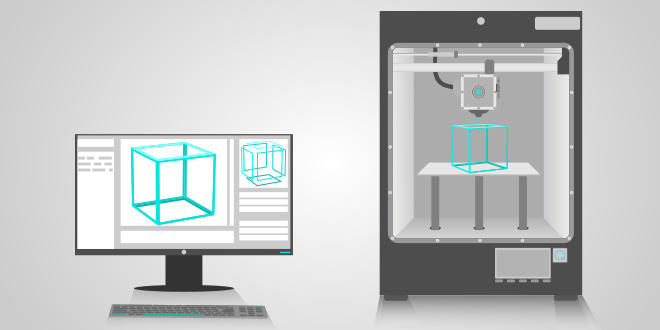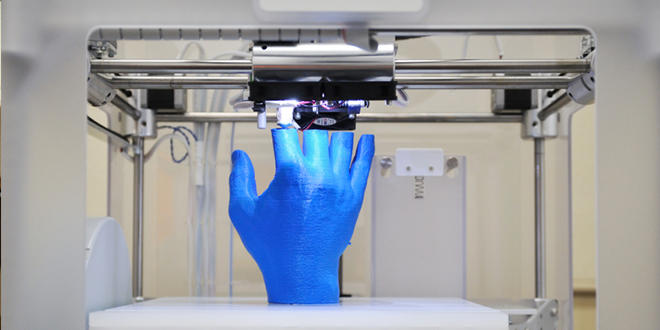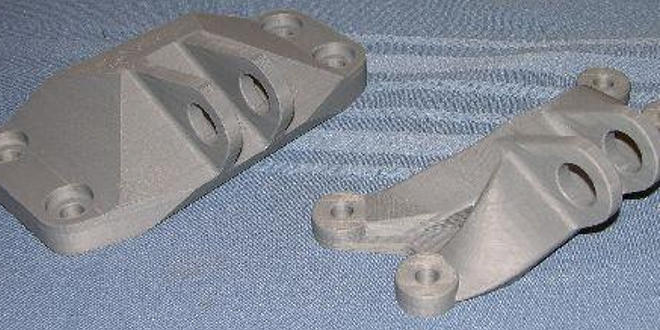Manufacturing Innovation Blog
Powered by the Manufacturing Extension Partnership

Additive manufacturing (AM) is hurtling into its wide and wonderful future. Right now heavy attention is being given to the promise AM offers to toy and fanciful trinkets makers or to heavy-weights in the aerospace industry. Deservedly, there are great investments and enthusiastic anticipation in both of these markets.
But the true promise of AM is likely to echo the evolution of the radio. The military and amateurs were eventually overtaken by the mainstream commercial manufacturers. Think of the internet or a dozen other innovations and you can imagine how AM might migrate to greatly impact our lives and economy.
Of course we are all impressed by the tremendous advances that AM has ushered for orthodontics, hearing aids and prosthetics. But the wave of commercial opportunity will be much greater than one-off applications we have seen so far. The “hockey stick” growth in U.S. manufacturing due to AM will show up when traditional manufacturers of anything from personal items (toothbrushes, eyeglasses, shoes) to industrial parts (fasteners, complex assemblies, packaging, plastic injection molded parts) to vertical industries (auto parts, publishing, electronics) each individually recognize the potential of AM in their business for a diverse set of opportunities.

They will embrace it not solely for final part production, or as its roots established: for demonstrating prototypes rapidly, but for enabling their traditional manufacture. It will be incremental but pervasive and impactful, often hidden. Manufacturers will recognize that AM technologies will enable them to do what they are doing, or would like to do, at less cost and more effectively. They will notice their competitors entering the space.
AM will truly make its way into the stuff in every household. Yes, getting desktop 3D printers into the hands of our kids- at every library and kitchen table - will enable a new workforce. That workforce will develop an intuition to make stuff better, easier and cheaper with AM inserted as appropriate. In the near-future, designers of everyday products will integrate AM processes into bits or big chunks of manufacture. Then American manufacturing will see its revitalization in a way that will make next generations proud. That is when we will see AM embedded within and enabling the production of many of our everyday products.
Giving every kid access to a 3D printer will revolutionize the way next-generation designers will think and approach problems. However, the same won’t be necessary for all manufacturers. There won’t be a need for every manufacturer to have a 3D printer on their shop floor in order to exploit AM technologies. The equipment, materials and upkeep for AM can be expensive. There is the threat of obsolescence as new equipment and materials arise, and because of the diversity of technologies, there is great potential to overwhelm with choices and niches.
The need to maintain finely-tuned equipment and a workforce that understands how to optimally turn the right knobs, may be best reserved for two different camps: those manufacturers who will need to continuously print new parts to suit their needs; or for the burgeoning service bureaus who will respond to the needs of manufacturers for whom an investment in AM equipment wouldn’t be sound. Let’s call the former manufacturers who adopt AM by owning the technology in-house: AM-owning Small and Medium-Sized Enterprises (SMEs). Let’s call the manufacturers who appreciate and accrue benefit from AM technologies without capital investments: AM-enabled SMEs.
AM-owning SMEs, and to a greater extent, service bureaus, need to stay abreast of new materials - as they are introduced - and evolving AM technologies - as the research being conducted at labs meanders into readiness for market adoption. They fully invest in AM because it’s at the core of their business, much like a mill, CNC, or other hard production asset. They need to have the best-fit technologies and materials for their applications, the right knobs to tweak, and the workforce that can map the constantly refreshing applications against the best “knobs” at their fingertips.

AM-enabled SMEs, on the other hand, don’t need to stay sharp on the latest advances. Rather, they need to know trends and have a keen awareness of how continuous improvement investments can leverage AM. For example, a jig that would have otherwise been unfathomable to produce traditionally can be envisioned, CAD-modeled and printed to enable complicated extrusions or assemblies that will delight a customer with design or cost savings. That is, AM-enabled SMEs will print ad hoc new molds or test units or fixtures or jigs that will be one-off within their shop but will be the linchpin to new products or maintaining their edge in the market with existing products.
To reach an inflection in how AM impacts U.S. manufacture, every SME will need an understanding of what is possible and the flexibility of mind to approach existing practices with a new framework. In my upcoming blog posts, I will share a few specific examples of how MEP Centers have helped traditional SMEs understand the potential of deployed AM projects throughout various points within the lifecycle of their products in ways that impact their bottom and top lines.
About the author
Related Posts
Comments
- Reply


